
Final Fantasy VII Rebirth Review

Pros
- Every character feels unique
- Breathtaking visual style
- Battle System evolutions are great
- A faithful recreation of FFVII's iconic world
- Some of the best characterization in the medium
Cons
- Chadley and MAI are incredibly intrusive
- Music can be inconsistent at times
- Far too many minigames
1997: a cultural phenomenon is born. Final Fantasy VII was released to rapturous adulation, inspiring not only the fans but also developers across the games industry. With fantastic characterization, stirring and emotional plot twists, and offering the journey of a lifetime, players worldwide were captured in its thralls. It was the game that defined the Japanese RPG genre and kickstarted Square Enix’ (then Squaresoft) dominance of the era.
2020: a cultural phenomenon is remade. Final Fantasy VII Remake, after long-term teasing and fan speculation, finally releases to an eager audience. Square announces that its ambitious remake will be split into three parts, with FFVII Remake being set within Midgar, the city of Mako, and the Shinra Electric Power Company. FFVII Remake was, for the most part, a faithful tribute to the beloved 1997 classic with a few new twists and turns thrown into the mix. That was until the ending, which threw up huge questions about the many new mysteries still to come.
2024: The Unknown Journey Continues…
Final Fantasy VII Rebirth is breathtaking at times
It’s rare to get two high-profile Final Fantasy games released in quick succession, but following the release of the unconnected Final Fantasy XVI back in June 2023, there’s hardly been enough time to catch your breath before the release of Final Fantasy VII Rebirth. Fortunately for players, Rebirth and FFXVI couldn’t be more different from one another if they tried. Whereas Final Fantasy XVI was very much focused on its main character as the central focus in a linear story-based game, Rebirth is the polar opposite, offering a massive open world to explore, tons of activities to take part in, and some of the best character interactions the franchise has seen in a long time.
The story of Final Fantasy VII Rebirth takes place following the events of Remake, as the party finds themselves in the peaceful, quaint town of Kalm (which has received a massive glow-up from its first memorable iteration). Cloud Strife is delivering his recollection of his former associate, Sephiroth, who has gone from from decorated war hero to a potential planet-ending menace. Rebirth’s first chapter focuses entirely on this flashback, as you get a taste of the physical prowess of Sephiroth first-hand, as he is playable for much of the events.
This sets the tone for what’s to come in the game’s main plot, the party is in pursuit of Sephiroth, with Shinra hot on their heels, and Cloud’s worsening mental state all at play. The familiar beats of the original release are there. Very little is cut and it’s great to see fan-favorite locations such as Costa del Sol, The Gold Saucer, and Cosmo Canyon all recreated with dazzling modern graphics. The classic musical themes for all of these areas are here - fueling the nostalgia that is a key part of the Rebirth experience.
Interestingly, the main plot is not where FFVII Rebirth shines brightest. Perhaps this is due to the open-world nature of the game, but you’ll often find yourself going through large stretches of the game with the narrative barely moving forward, especially if you choose to engage in a lot of the optional content. Fortunately, this isn’t such a bad thing, as by far the best part of Rebirth’s writing and indeed, its story, is the characterizations of each member of your party. The interactions between Cloud and his allies is one of the very best in the medium, encouraging me to play through all of the optional content that Rebirth has to offer.
(1 of 2) Your allies will join Cloud in the side quests, giving them a lot more personality
Your allies will join Cloud in the side quests, giving them a lot more personality (left), while you can use the Folio system to purchase new paired attacks known as Synergy Abilities (right)
Each of the seven party members has their own distinct personalities that not only shine through the main story, but are embellished through the side quests, (with specific party members playing major roles in each), as well as the general party banter as you traverse the world. Whether it is Cloud’s deadpan humor shutting down Yuffie and her next bizarre idea, Tifa’s concern for Cloud’s wellbeing and mental state, Barret and coming to terms with his murky past, or Red XIII’s emotional homecoming, Rebirth goes to great length to present the cast as a great team that is there for one another other, no matter the trials that they face.
It’s this part of the story that I feel not only elevates Rebirth over Remake but also expands greatly on what was there in the original. Aerith is given much more character in Rebirth than she ever had in this section of the original Final Fantasy VII and it pays off majestically later in the adventure. A few of my favorite moments from the original, such as Barret’s backstory or Red XIII greeting Bugenhagen after he makes his return to Cosmo Canyon, all of which are accompanied by fantastic renditions of some of the best music from Final Fantasy VII.
The story isn’t all great, however, and there are a few moments that I’ll remain a little undecided on until I receive full context in the conclusion of the trilogy. I was excited about Zack’s inclusion in this version of Final Fantasy VII, especially as his appearance on the packaging signaled his importance. Unfortunately, despite there being a fair few scenes where you have control of Zack, his story doesn’t seem to go anywhere when all is said and done. You could even cut him out of the game entirely and (for now at least) nothing would be lost. It remains to be seen whether the payoff will be in the final part of the trilogy.
As is becoming the norm since FFVII Remake, FFVII Rebirth’s ending is yet another one that will divide the fans. If you’re still on the fence about this version adding various changes to the original, nothing here will do much to sway you to one side or the other. Much like Remake, the game’s conclusion sees a lot of themes take center stage, and when all was said and done, I was personally satisfied by the climas - if not a little confused by the entirety of what happened.
But I’ll save that for the theory crafters.
There are plenty of activities to dig into in the open world
The biggest challenge facing Square Enix when creating FFVII Rebirth was just how they would go about approaching The World Map. There weren’t as many issues with Remake, as there was only so much you could do with world design when the game was set just in a singular city. But following the events there, the party once again ventures out into the world on a globe-trotting journey of epic proportions. Much like in the original Final Fantasy VII.
As was the norm for the era, many Japanese RPGS featured a world map in which your character would walk around a large, downscaled environment, traversing to the next dungeon or town. These were often represented as a single house, which your character would tower over as they crossed the map. Not only that, but there would also be a myriad hidden areas to find, and you could breed special Chocobos to reach new, previously inaccessible areas. Recreating this for the modern era was, for me, the largest challenge the developers would face when creating Rebirth.
Fortunately, my fears were soon allayed upon traversing the Grasslands for the first time - while hearing that iconic world map theme from the original game. Square Enix has split the map of Final Fantasy VII into distinct regions based on the same locations as the original. The Grasslands, home of Kalm, gives a fantastic opening impression of what to expect from the world at large and it’s not long until you run into your old friend Chadley, who opens an entirely new layer to exploration.
(1 of 2) MAI will chatter without pause during the Fiend Intel that you undertake
MAI will chatter without pause during the Fiend Intel that you undertake (left), You’ll come across all manner of chocobos (right)
Despite not being… everyone’s cup of tea, Chadley is responsible for all of the activities in the open world. Upon seeking out one of the many towers in each of the regions, you’ll reveal World Intel, which, when completed, will reward currency that you can spend to develop new materia with Chadley. As a general rule, there are eight different types of Intel you can find in a given region and, as you complete each of them, you’ll unlock new battle simulations to undertake at Chadley’s VR Combat Simulator, which rewards you with even more new materia. This loop feels rewarding no matter what you do, although some regions are much smaller than others (it took us only an hour or so to complete the Intel in the final region).
As you travel the regions, you’ll also find a unique chocobo, which when wrangled, will give you access to otherwise inaccessible areas. One chocobo will allow you to scale walls, while another will allow you to glide, and the region’s level design factors into making each region feel distinct, with a new sense of exploration. Rebirth does a good job of adding more linear chapters between some of the open-world regions for variety, which works for the most part. There is an exception to this, however, as I found Chapters VI-VIII to be something of a slog - mostly due to a lack of world exploration and an abundance of minigames. This aside, Rebirth does a fantastic job of recreating that sense of epic, global adventure found in the classic PlayStation Final Fantasy titles.
Nearly every little thing you do in the open world will see Chadley chipping in with some comment or remark, while usually taking direct control away from you.
It’s not all rosy, however. The open-world exploration will also see you dealing with two of the worst parts of the Final Fantasy VII Rebirth experience: Chadley and MAI. These characters both fulfill the same purpose, delivering information on the various Intel you seek out, but their degree of intrusion becomes a severe issue the more you play of Rebirth. Nearly every little thing you do in the open world will see Chadley chipping in with some comment or remark, while usually taking control away from you. While their input is sometimes quite useful - providing lore for the many Summons that you can acquire throughout your adventure - the majority of it is simply Chadley calling in to tell you that you’ve scanned another Lifespring, or acquired the next step of some Divine Intel. This is information which, essentially, serves no real purpose beyond wresting control away from the player.
MAI is Chadley’s female assistant and, although she doesn’t intrude as much as Chadley, she is perhaps a greater offender overall. Whenever you undertake Fiend Intel in the various regions (of which you can expect between four-to-six), she’ll continue to spout out a stream of facts about the current fiends you may be battling. What makes this worse is that this persists throughout the entire encounter, during which you’ll be concentrating on the matter at hand or attempting to listen to Rebirth’s excellent array of battle tracks. I honestly couldn’t recount what she said during the majority of them, as it was automatically relegated to background noise, and therein lies the problem.
Fans of the original Final Fantasy VII will remember that it had many minigames - from Fort Condor or Snowboarding at Icicle Inn, to the many minigames that dominated the Corel region’s theme park: The Gold Saucer. Rebirth tries to recreate this, although it takes this to another extreme, populating the world and main plot with minigame after minigame. In one way, this does vary the gameplay experience somewhat, but on the other hand, it becomes overbearing to the point you’re almost spending as much time in minigames as you are in the actual adventure itself.
There are some gems there, for sure. Queen’s Blood - the new card-based minigame - is a real pleasure. Progressing the plot to reach a new town, and thus, new players to play against was one of my main driving forces (sorry, Sephiroth). The Gold Saucer minigames were also fine, some of which are faithfully recreated from the original, and if you’ve played the original, you know to expect this. Where it becomes too much is when you unlock four new side quests in a region and the majority of them each involve a minigame, such as carefully plucking a mushroom from the ground, or guiding chickens back to their owner.
This becomes a real problem when you reach the aformentioned Chapter VI-VIII stretch of the story. Chapter VI features an area wherein you take part in a series of minigames before you get a short moment of world exploration followed by another chapter full of minigames. It all became too much and was the first time I found myself wanting to actively skip some of them (but wasn’t able to due to them being part of the story). To compound this matter, fans who like to hunt out the Platinum Trophy will be forced to master almost every minigame - as one side activity requires you to collect all the rewards received for completing them.
The Gold Saucer is as grandiose as ever
Final Fantasy VII Remake has perhaps one of the better combat systems in a long time, with a perfect blend of action combat mixed in with the strategy of using your ATB Charges, (filling upon attacking the enemy), to assail your foe’s weaknesses. The battle system returns in its full glory, with new and engaging layers. The largest new feature is that of the Synergy Abilities and Skills system. Pairs of characters can now team up to unleash Limit Break-like dual attacks which grant a host of benefits for a short period after, such as Zero MP Cost or raising your Limit Level (to use higher-level Limit Breaks).
While you’ll need to use ATB Charges to build up toward these attacks, Synergy Skills offer similar benefits on a smaller scale and can be used at will, offering an effective way to build two characters’ ATB gauge at once. You’ll have to use your Skill Points (that you earn from leveling up and from manuscripts) to learn them from the new Folio system. Think of this as a skill tree, that you work your way through as you amass SP throughout the adventure. A nice touch is that you can refund and spend your points at certain locations, prompting you to fully explore the build options on offer.
In addition to these core mechanics, each character continues to have their own, unique playstyle, while some (such as Cloud) have had further refinements to how they worked in Remake. Cloud now has a way of hitting enemies at range and is much more aerial-focused than he was before. Newcomers Red XIII and Cait Sith both have excellent movesets that help differentiate them from the rest of the team. Cait Sith especially is faithfully recreated in how he played in the original, allowing you to ride the Moogle while tossing dice at your foes for various boons. The new weapons each character can acquire (which are impossible to miss now, thanks to allowing you to purchase them from the next weapon shop) will give new abilities to each character too, constantly giving you new tools to play with.
What would Final Fantasy VII be without materia? It pleased me greatly to see a much better representation of all of the various types of materia the original had. I felt Remake was missing a lot of the more interesting types so I was happy to see that a lot of the more obvious missing ones make the cut. There is a wide range of materia to inflict status ailments; combined elemental materia such as Fire and Ice; and even staples like Comet and Jump. These gives you a massive degree of flexibility in how you shape your party, and the game’s battles make good use of these with there being more varied pressure conditions - allowing you to stagger enemies.
(1 of 2) Moogle House is just one of the many number of minigames that dominate Rebirth
Moogle House is just one of the many number of minigames that dominate Rebirth (left), Queen’s Blood is one of the better pasttimes in the world of FFVII (right)
It’s safe to say that I’ve never played a game with so many different musical themes, Rebirth is constantly throwing so many new arrangements at you that it’s rare to hear the same track more than once. While this can work against the game at times (it can be hard to have a favorite track when there are so many to choose from!), it always gives you something to look forward to… unless MAI is yabbering over the top of it. The most iconic themes from the 1997 original are here, and I couldn’t prevent a smile from cracking when I entered Cosmo Canyon for the first time and the music started playing.
The genres can, unfortunately, be a little inconsistent at times. This is best represented during the many side quests and minigames that populate Final Fantasy VII Rebirth. One moment you can have an amazing, beautiful arrangement of the world map theme, to all of a sudden have a dubstep track playing as you climb a mountain. It can cause a bit of a whiplash giving Rebirth a lack in distinct style, instead going for “a bit of everything”. On the subject of audio, the sound mixing can occasionally cause the voice acting to be a bit muted at times. Ultimately, however, the music very rarely misses the mark, even if by default.
Technically, Final Fantasy VII Rebirth is a bit of a mixed bag. It is frequently breathtaking and features some of the best character models I’ve ever seen. But at the same time, some of the textures in the open-world areas leave a lot to be desired. It can be hard to miss as you, for example, scale a cliff and see the great character models clash with the more generic background textures. I played the majority of my playthrough in Resolution Mode but did dip in to check out Performance Mode and the difference was stark, to the point that the drop in visual fidelity was not worth the gain in FPS.
Final Fantasy VII Rebirth is a mammoth game, our playthrough took me around 100 hours and that included doing the majority (but not all) of the side content uncovered in a first playthrough. This is not to even mention the post-game battles and challenges that open up, as well as an unlockable Hard Mode playthrough - required should you wish to grab that Platinum Trophy. Much like Remake’s variant, Hard Mode puts your resource management to the test while asking that you have full mastery of Rebirth‘s systems. Of course, there are some optional bosses that are definitely “up there” in Final Fantasy history as battle that truly test the player’s skill.
Rebirth arguably represents the best that Final Fantasy has been in a long time - and in a direction that I’d like to see the series continue.
So, How was I left at the conclusion of Part II of this ongoing adventure? I was a big fan of Final Fantasy VII Remake despite both its linearity and its misgivings, and I feel that Rebirth addresses that and more. It arguably represents the best that Final Fantasy has been in a long time - and in a direction that I’d like to see the series continue. Rebirth is not without its shortcomings but, when the story was over, I was left wanting to see how this epic tale will eventually end. For that reason alone, Square Enix has delivered a great spectacle. I’m sad that it’s going to be a long wait until I can spend more time with these characters - I can’t wait to see the direction the story takes en route to its epic conclusion.
This review is based on a retail copy of the game purchased by the reviewer.
An Unforgettable Journey
Final Fantasy VII Rebirth ups the ante in this unforgettable globe-trotting journey. Featuring some of the best characterization in gaming and a faithful and enjoyable recreation of Final Fantasy VII’s world, this is one train you won’t want to get off.
Gameplay:
Sound:
Graphics:
Story:
Value Rating:

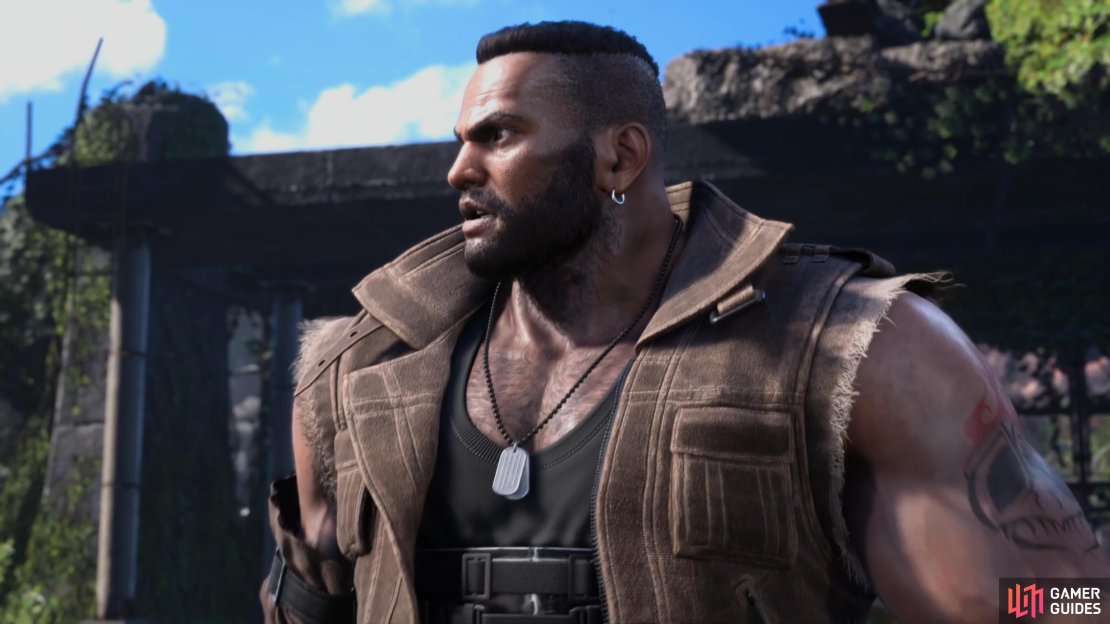
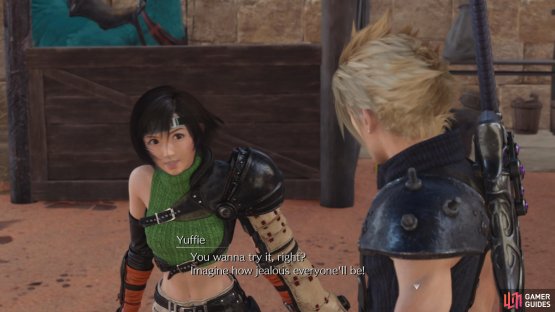

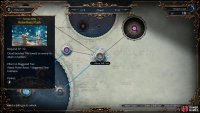

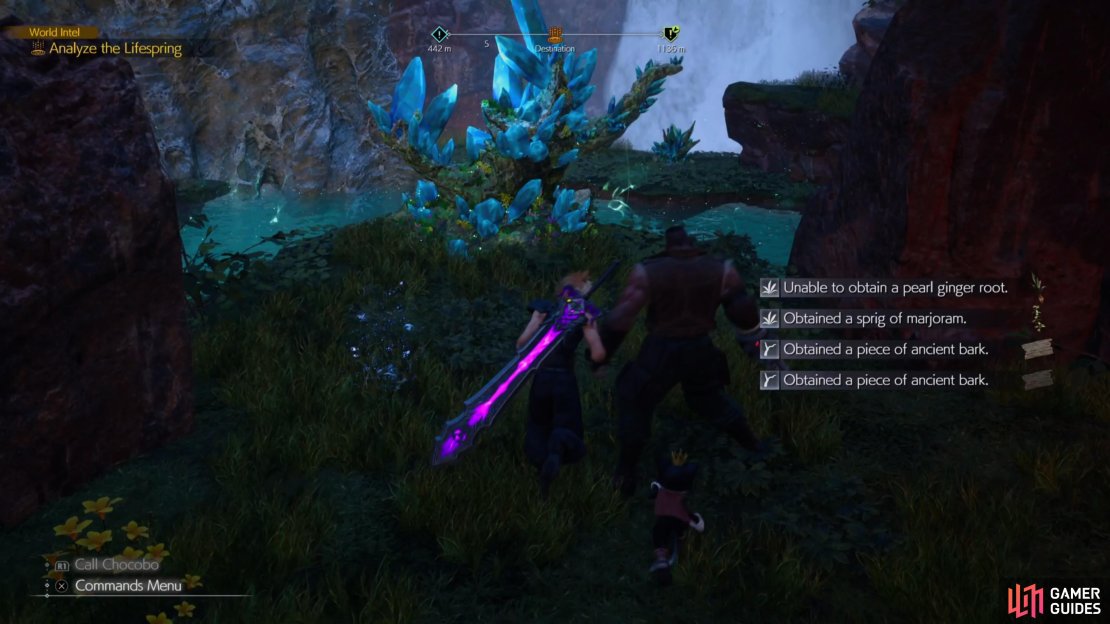
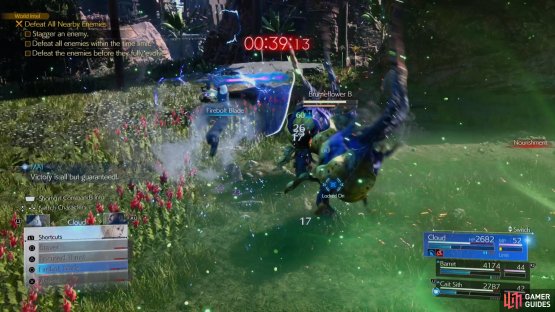

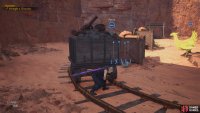


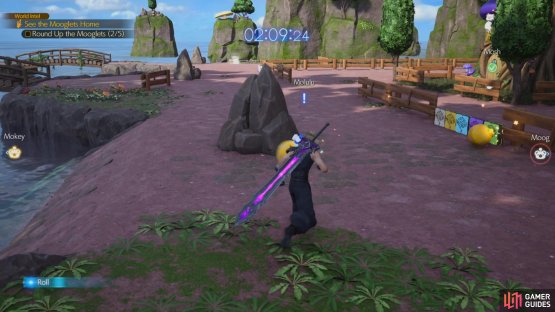

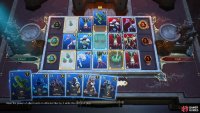


That's great!